Mortars, mortar complexes and mortar ammunition
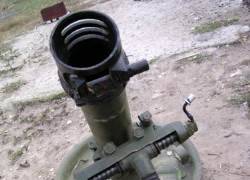 The ongoing development of lightweight mortars promise increased levels of accuracy and mobility for those who use this powerful weapon support in urban areas, while the center of projects to reduce the mass and forces of rollback are heavier self-propelled options, reports Land Warfare International August.
The ongoing development of lightweight mortars promise increased levels of accuracy and mobility for those who use this powerful weapon support in urban areas, while the center of projects to reduce the mass and forces of rollback are heavier self-propelled options, reports Land Warfare International August.In July, 2013, BAE Systems reached an important milestone in its XL59 program and conducted successful 81-mm mortar "low-sensitivity ammunition" at Qinetiq's Eskmeals in the UK. They followed preliminary tests conducted a month earlier, where all the shells flew along the expected trajectory over the entire temperature range from -46 to + 71 ° C and at various masses of charge.
The qualification program will begin at the end of 2013, and production and supply are expected to begin at the beginning of 2015. The 81-mm mortar is the subject of a series of projects to develop improved solutions for infantrymen.
At the beginning of 2012, BAE Systems and General Dynamics Ordnance and Tactical Systems (GDOTS) announced that they would jointly develop, demonstrate, and produce an affordable RCGM version (Roll Controlled Guided Mortar - roll control) 81-mm high-precision mortar shot.

Combat effectiveness
This solution uses the existing British L41 projectile and the American M734A1 fuse, including GPS guidance and RCFC (Roll Controlled Fixed Canard) technology - fixed nasal rolls with roll control) from GDOTS. According to BAE Systems, this solution allows you to invest "an inexpensive, highly accurate indirect guidance system in the hands of a soldier on the front line, dramatically increasing his combat effectiveness", as well as improve accuracy in order to deliver faster, more effective fire to the target.
The development ended with 25 with live shooting from British 81-mm mortar at the Yuma range in the presence of representatives of the armies of Australia, Canada, Great Britain and the United States, as well as the Marine Corps. Shooting has shown that it is quite possible to create lighter mortars, for example, an 81-mm mine with an 4,5 kg mass can improve the mobility and accuracy of existing mortars.
In the past decade, the demand for more accurate and mobile mortar systems has increased. The transfer of hostilities to cities in particular and the need to limit indirect losses in these conditions force us to develop high-precision mortar weapons.
Most mortar systems are designed for use by infantry units, they must be light and easily transported, providing fire support in various environmental conditions and leading accurate mounted fire at a range of 70 - 7000 meters and more. In the US military, mortars are regular weapons in all battalions of combat brigade groups, as well as in the US command of special operations forces.
“The US Army uses mortar fire either to stop, suppress and neutralize enemy forces, or in contact with allied forces to illuminate the battlefield, put up a curtain or prevent enemy actions against American and allied forces,” said a representative of the military plant Picatinny Arsenal. - During Operation Iraqi Freedom, mortars did not play a big role, since the rules of engagement limited their use; at that time, it was a weapon for striking squares and mortars were not fired at Baghdad, in particular because of the problem of indirect damage. ”
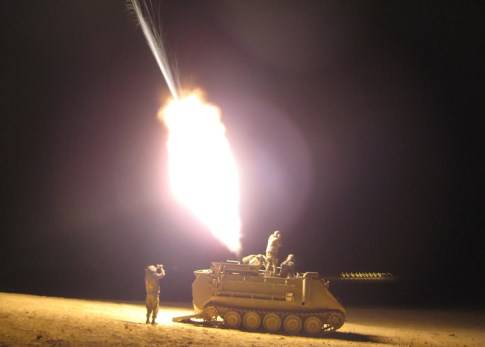
Extensive needs
Since then, a number of statements on operational requirements have been submitted by the US military, including a request for an 120-mm high-precision mortar shot. The Accelerated Precision Mortar Initiative's Accelerated 120-mm Precision Mortar Shot Initiative is designed to fulfill this requirement. Supplied to the US Army by ATK, under the designation XM395, the 120-mm high-precision mortar round has a permissible round deviation (CEP) less than 10 meters at a range of 1 - 6,2 km. With the exception of armored brigades, it is in service with the Stryker infantry and mechanized brigade groups.
APMI has proven itself in the fighting to deliver a high-precision high-explosive impact on the enemy while limiting indirect damage, ”the plant representative added. “The army is currently developing an official program called the 120-mm high-explosive guided mortar shells HEGM (High Explosive Guided Mortar), which should incorporate the initiative of APMI.
This successor to the APMI will provide an improved projectile with a greater range and greater reliability than current ammunition manufactured to meet urgent requirements. ”
The representative of the military plant explained that such accuracy is necessary in order to fire with more restrictive rules of combat and to destroy moving targets not from the first shot.
GDOTS is awaiting official HEGM requirements. In her proposed solution, the prospective solution for the APMI initiative of the American army is taken as a basis. Similar to the work of BAE Systems on the 81-mm mortar shot, GDOTS applied its RCGM and RCFC technologies in a standard 120-mm mortar.
Tests have shown that 120 martial RCGM projectiles can be successfully guided within 10 radius of meters from their target at 1000 - 5000 meters. The tests also demonstrated the capabilities of the RCGM in air blasting, point detonation and detonation at slowing down, as well as the ability of these projectiles to operate at high and low air temperatures.
“In anticipation of the official demands of the army for HEGM, we hope to offer something like this - possibly with a modification of the trajectory - for RCGM based on its high accuracy and economic profitability,” said Joe Buzzett, director of technology programs at GDOTS. “In the army there will always be a desire to use mortars to suppress, but accuracy is increasingly in demand in urban areas, where the basis is a reduction in indirect losses.”
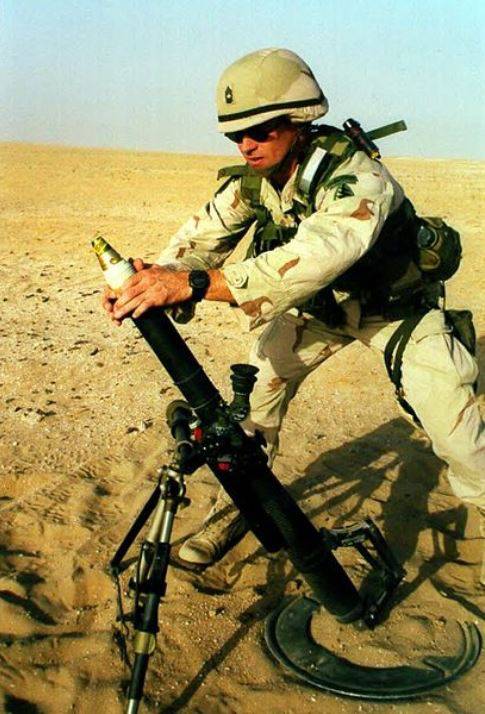
Extended range
The ATK company’s contract for the supply of APMI is currently executed, and there they state that they are waiting for the decision of the army in which direction they are going to take the next step in the deployment of high-precision mortar complexes.
The company is currently working on a technical demonstration contract worth 14,3 million dollars issued in December 2012 of the year to develop a solution complying with the requirements of the USCM on a high-precision PERM (Precision Extended Range Mortar) 120-mm mortar shot.
Developed solutions to increase the range are of great importance for American mortar systems, either by improving ammunition, or by upgrading mortars, or by both.
"The combat space of all our brigade groups is expanding and the need for enhanced range solutions is very significant," said a representative of the military plant Picatinny Arsenal. “A mortar with a range of 14,4 km (twice the current range) could cover four times the area of the existing 120-mm battalion mortar system.”
In the APMI initiative, ATK added a guided fuse to the XM395 mortar shot, which replaced the traditional fuse and tail stabilizer to the standard M394 mortar projectile to provide the necessary stability for proper projectile guidance in flight. As part of the PERM program, the company is working with its GDOTS partner to create a new projectile. GDOTS will be responsible for the data link and ATK will provide targeting capabilities.
Within the framework of the two-year PERM development program, ATK will demonstrate a high-precision mortar shot with a guaranteed QUO 20 meter, the production of which and, ultimately, the supply to the troops could be quickly adjusted. This initiative is closely interrelated with the doctrine of operations of the US International Maritime Commission on disembarking ships to the coast, which provide for firing precision-guided long-range mines (16 - 20 km) from the marine infantry units towed by the mortar of the Expeditionary Fire Support System.
Weight reduction
Mass mortar systems are also at the center of ongoing developments. This factor is a vital characteristic of weapons intended for use by infantry units in melee combat. Implementing greater precision in lighter systems will enable faster deployment of mortars at company level.
As part of a joint project of the army and the USMC, the M224A1 system reduced the mass of the M60 224-mm mortar from 20 to 15,8 kg, but at the same time all combat requirements were maintained (ammunition compatibility, rate of fire). M224A1 is currently in service.
A similar way is the program to create a light version of the 81-mm mortar M252, designated M252A1. Currently, final tests are underway with planned deliveries to the troops at the start of 2014. According to a Picatinny Arsenal representative, the weight of the M81A252 1-mm mortar is reduced from 39 kg to 34 kg while maintaining all operational requirements, and the new version returns the single structure (A-frame of the bipod) to all army mortar systems.
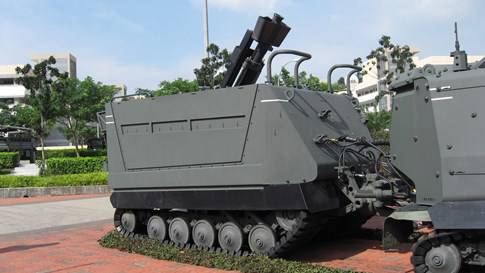
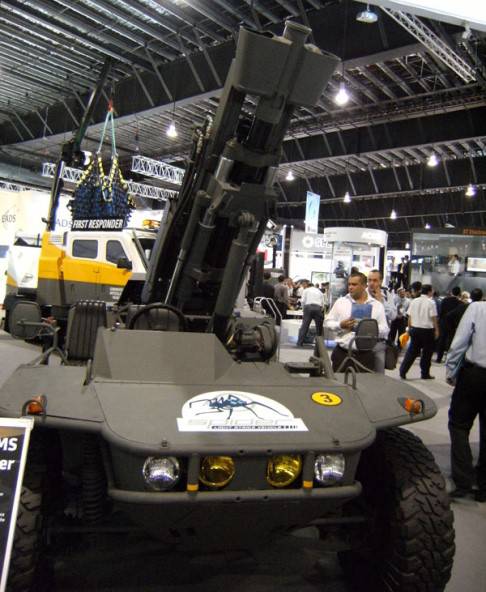
Self-propelled mortar installations
Although falling into the heavy category, towed and mounted on a trailer 120-mm mortars still have their own requirements to reduce the forces of recoil. Mortar complexes M120 and M121 of the US Army, modifications of the K6 Soltam mortars (currently part of Elbit Systems Land and the C4I division) weigh less than 150 kg and are serviced by four people. The newest 120-mm mortar systems developed by Elbit are "mortar with recoil devices" .a
In these mortars, the recoil forces are significantly reduced, which allows them to be installed on a wide variety of light and medium machines. Boaz Cohen, vice-president of Elbit Systems Land and C4I, said: “These systems are known worldwide as Cardom or RMS 6L systems and may have a range over 7000 meters, depending on the configuration and type of ammunition. Both manual and autonomous, fully computerized systems with automatic guidance, serviced by a calculation of two or three people, are available. Approximately 1000 systems were delivered or are in production. ”
Autonomous systems with a small recoil are equipped with computer servo-electric guidance systems, navigation and self-positioning tools. In these systems, the barrel assembly is housed in a hydraulic buffer, which reduces the recoil forces during firing.
Shot and drove away
The concept of development of mortar systems with recoil devices appeared in the 1990-ies, when the tactics of “fired and left” were introduced for small mobile units as evidence of the asymmetric conflicts of the time.
“We foresaw the trend towards shifting the spectrum of hostilities to urban operations, which position the mortar as the preferred weapon,” says Theo Küpics Vice-President of ST Kinetics (STK). - STK began developing its own anti-recoil mortar system, which can be installed on a variety of light wheeled and tracked vehicles. Our 120-mm ultra-fast Super Rapid Advanced Mortar System [SRAMS] advanced mortar complex is the result of this development program. ”
The SRAMS 120-mm smooth barrel mortar is mounted on recoil devices, and is also equipped with an original muzzle brake. The complex is equipped with an inertial navigation system and a ballistic computer, which are connected to the onboard MSA, which allows the SRAMS to perform automatic guidance and independent firing tasks. The complex can be installed combat control system, which is connected to the military communications network. The system was sold to an unnamed buyer in the Middle East in 2008.
“When firing standard 120-mm shots, the SRAMS complex has a maximum range of 8,5 km. SRAMS has small recoil forces and can therefore be installed on light platforms such as the STK or Hummer SPIDER Light Strike Vehicle, ”continued Theo. - The possibility of transportation by helicopter allows you to deploy it amphibious or special forces. In addition, the SRAMS 120-mm mortar can easily provide fire support to mechanized troops. The SRAMS complex can be configured to fire with other modern mortar rounds. ”
The design of the recoil mechanism regulates the recoil force to 24 tons. This is a critical value when installing 120-mm SRAMS on light and medium machines - what STK sees as a defining trend.
“Increasingly, mortar systems are being installed on vehicles, and therefore control of the recoil forces in systems like SRAMS is very important,” added Theo. “The mass of the 120-mm complex SRAMS is also amenable to correction, as there are restrictions on the carrying capacity of vehicles.”
Further development
In general, customers are seeking more and more benefits from mortars. Increased accuracy and mobility, increased range allow you to get the capabilities that previously could only provide artillery systems. Given the lower cost compared to artillery, mortars are also in great demand from countries that cannot afford expensive guided missiles or artillery systems.
The development of mortars is moving in the direction of self-positioning, automatic guidance and ballistic calculations, the use of this type of weapons on the battlefield will only expand.
“Mortar systems and technologies will borrow the experience of current development projects in which a variety of sensors are connected with affordable weapons,” said a representative of the military plant Picatinny Arsenal. - If mortar complexes learn to measure and refine the coordinates for all types of combat operations, the fire of mortars of all types and variants will become more accurate. In addition, with the introduction of automated systems, the availability of which in digital networks will be instantaneous, mortar fire will become very responsive (response). Theoretically, when combined with modern radar or sensor complexes, mortars could be used as autonomous counter-battery systems. ”
Information